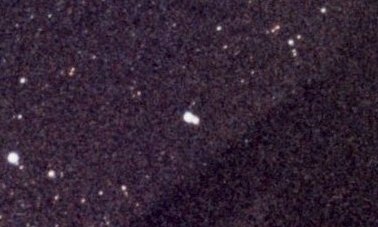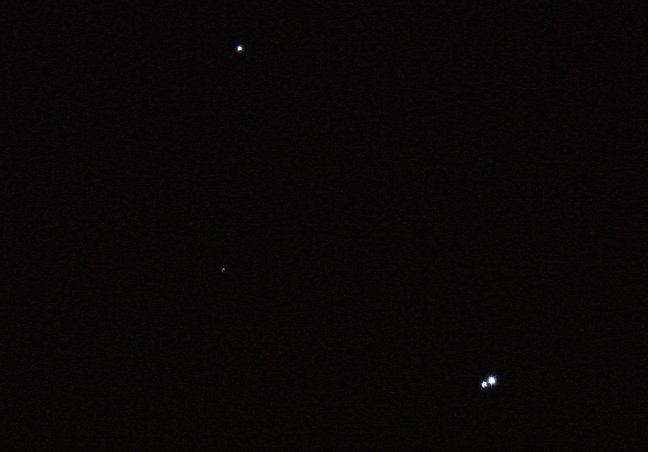
 |
Mizar (the brighter) and Alcor appear at dead center. Separated by 11.8 minutes of arc, are they a real orbiting pair? Probably. Measurements allow them to be at almost the same distance of 82.2 light years. |
 |
In one magnified swoop we see the whole system, the famed naked- eye double formed by Mizar (also a visual double) at lower right and Alcor at upper left, the two separated by just under 12 minutes of arc. All three are again double, yielding a sextuple system. The faint and quite unrelated star just to the lower left of center carries the unwieldy proper name of Sidus Ludovicianum in honor of the deceased Ludwig V of Hesse Darmstadt (1577-1626). Image courtesy of John Thomas. |